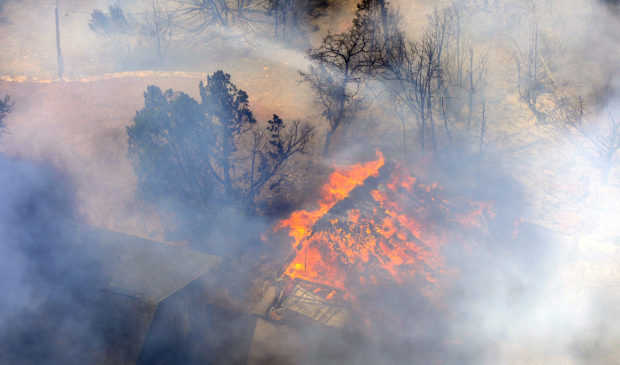City prepares to implement new Wildland-Urban Interface fire code
Tuesday, October 27, 2020 by
Daniel Salazar Austin Fire Department officials gave the Environmental Commission an update on the new Wildland-Urban Interface Code Wednesday.
City Council voted in April to adopt the new code, which regulates residential and commercial building requirements to protect structures against wildfires.
With the WUI Code expected to be implemented on Jan. 1, 2021, the city is working on the code’s administrative rules, Austin Fire Marshal Tom Vocke said during a presentation to commissioners.
Vocke said they’ve been busy consulting stakeholders like other municipal governments, city commissions and construction industry representatives.
“We’ve had a lot of input from every side, a lot of competing interests,” Vocke said. “We’ve tried to weigh all those things and come up with what we feel is a balanced response.”
While there is wildfire risk across the city, some areas like West Austin’s District 10 are at higher risk than others.
“As more folks push in, the density is increasing,” Vocke said. “We’re trying to stop urban sprawl, but at the same time that adds density.” Vocke said most homes destroyed by wildfires catch fire from floating embers, not direct contact with flames.
“That has allowed us to focus on ignition-resistant construction as our primary means of making this Wildland-Urban Interface Code effective in the city,” he said. “What we didn’t want to do is have a fire code that allowed flammable structures to exist and removed all of the vegetation from the area as a way to meet the code.”
Vocke added that using construction materials and methods that are more fire-resistant “buys us time to get there (and) buys us time to evacuate people.”
Marvin Lewis, an AFD engineer, said certain ignition-resistant construction designs for walls, doors and roofs will be required for houses or structures within 150 feet of 40-plus-acre tracts of wildland, as well as structures a mile and a half from 750-plus-acre tracts of wildland.
Officials hope the WUI Code will be a model for other localities as the state of Texas continues to add residential and commercial structures bordering wildlands to house its growing population.
“It’s a livable example for other communities in Central Texas (demonstrating) how they can reduce their risk from wildfire and protect the environment from wildfire at the same time,” Wildfire Mitigation Officer Justice Jones said.
Commissioner Mary Ann Neely asked if Austin fire officials have learned anything from the massive wildfires on the West Coast in recent months.
Jones said Austin has sent crews to California to fight the fires and will bring back lessons they learned on the ground. Jones noted that emerging research shows that homes built to WUI Code standards have a higher survivability rate.
“We’re seeing evidence that this is part of the long-term solution for addressing wildfire risk,” Jones said.
Commissioner Wendy Gordon asked how remodeling would be defined under the code, since fireproofing could become a costly venture for homeowners.
“People want to do the right thing and they realize that they have some self-interest in doing the right thing,” she said. “But if pushed too hard, then people won’t do the right thing because the bottom line is going to be protecting their pocketbooks.”
Environmental Compliance Specialist Mark Baker said the remodeling requirement would entail using ignition-resistant construction for only the portion of the structure that is being remodeled.
Officials added that while some ignition-resistant construction is already standard industry practice, more guidance would be provided to contractors and homeowners once the rules are in place.
“We were not looking to overstep and make a code that’s impossible to apply,” Vocke said. “So this is step one and we’re going to continue to work on things that we can do.”
The Environmental Commission took no action on the code presentation.
Photo made available through a Creative Commons license.
The Austin Monitor’s work is made possible by donations from the community. Though our reporting covers donors from time to time, we are careful to keep business and editorial efforts separate while maintaining transparency. A complete list of donors is available here, and our code of ethics is explained here.
You're a community leader
And we’re honored you look to us for serious, in-depth news. You know a strong community needs local and dedicated watchdog reporting. We’re here for you and that won’t change. Now will you take the powerful next step and support our nonprofit news organization?








